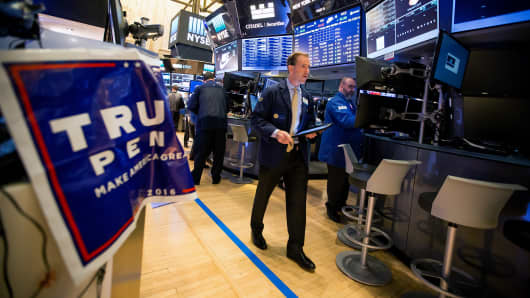The market's booming right now, but it may not mean that much in the long run.
Donald Trump's election has given a quick boost to stocks, with the Dow Jones industrial average touching all-time highs. Since markets closed Tuesday, the Dow and the S&P 500 are up about 3 percent — and that's after coming back from the massive Tuesday night drop. Some market observers expect that boom to continue through Inauguration Day on Jan. 20.
Here's the thing, though: Postelection returns are almost always positive. If anything, there's a tendency for the market to overreact prior to Inauguration Day.
Going back to the 1952 election, the median return for the S&P 500 is 3.7 percent between election and inauguration. But in the 50 trading days right after, the market has actually averaged a loss. Even more so, when you consider the first 100 or 150 trading days after the inauguration, there is zero correlation to that November-to-January rise: Literally almost exactly 0.00.





